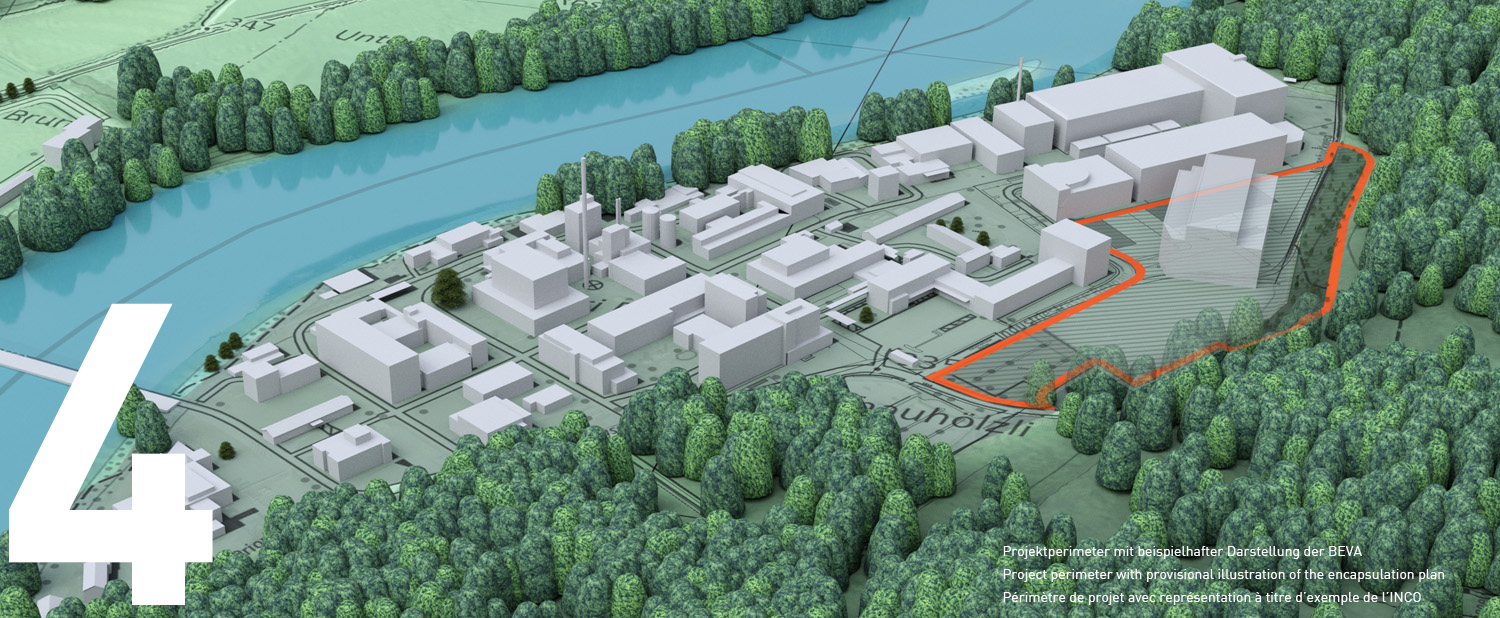In line with the Nuclear Energy Act, the safety and suitability of the site where the encapsulation plant for spent fuel assemblies is to be constructed and operated has already been reviewed several times during the licensing process for the Zwilag interim storage facility and the adjacent nuclear facilities of the Paul Scherrer Institute.
With their very low external hazard potential, the site and its surroundings have proven for decades to be suitable for the operation of nuclear facilities. When preparing the general licence application for the encapsulation plant, the suitability of the site and thus the safety for the operational phase were once again reviewed and confirmed based on the state of the art in science and technology and in line with the Nuclear Energy Act and Nuclear Energy Ordinance as well as ENSI guidelines.
The range of analysed hazards includes events such as pdf floods(10.91 MB) , pdf extreme weather(4.06 MB) and pdf earthquakes(59.29 MB) . The systematic assessment shows and confirms a very low hazard potential for the site and the plant caused by natural or human-driven events. In particular, the site does not exhibit any features considered unusual in connection with nuclear facilities.
The encapsulation plant can be designed taking into account the corresponding site-specific hazards in such a way that any unacceptable radiation exposure of the population as a result of these hazards can be ruled out. As already implemented, demonstrated and officially verified for other nuclear facilities, the plant is designed such as to exclude impacts resulting from rare incidents such as earthquakes or accidents such as pdf aircraft crashes(4.45 MB) .
In analogy with the hot cell at Zwilag, dropping a fuel assembly in the transloading cell of the encapsulation plant during transloading is considered an incident with the potentially greatest impact. For this highly unlikely event, it has already been demonstrated in the case of Zwilag that the radiological consequences for the population will be well below the permissible dose limit. Correspondingly, in the case of the encapsulation plant, the surrounding area, population and workers can be protected from unauthorised radiation exposure during normal operation, operational malfunctions and in the event of incidents or accidents using proven nuclear safety precautions. The suitability of the site from a safety perspective is thus confirmed.
The site has sufficient spatial reserves to implement the encapsulation plant. The basis for demonstrating disposal feasibility in the general licence application is a conceptual description of the processes involved in repackaging the HLW from the transport and storage casks into the disposal canisters. The provisional dimensions of the encapsulation plant and other functional buildings and areas are derived from security measures and logistical processes.
The projected processes and facilities in the encapsulation plant are based on many years of experience in the construction and operation of the Zwilag interim storage facility and other comparable nuclear facilities.
The proposal for the approximate dimensions and location of the plant, which are to be determined with the general licence, is also based on this. The proposal is bounding and allows for future project developments, such as technical improvements or changing circumstances, as provided for in the licensing procedure set out in the Nuclear Energy Act.

